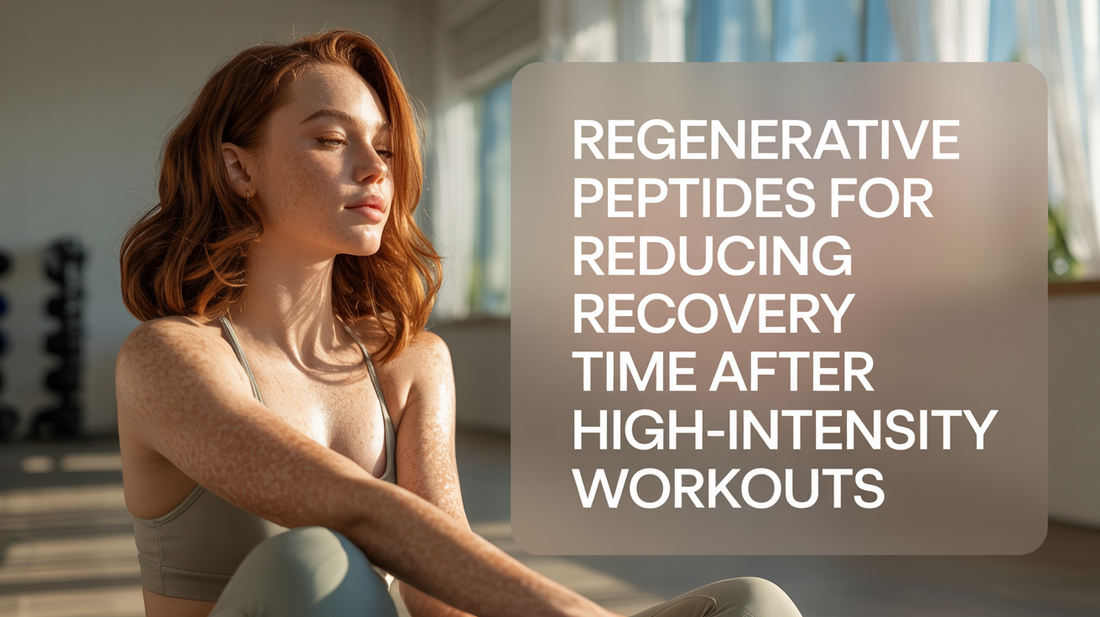
Regenerative Peptides for Reducing Recovery Time After High-Intensity Workouts
Share
High-intensity workouts push the body to its limits, but the strain often leaves athletes with lingering soreness, stiffness, and extended downtime. Reducing recovery time is essential for maintaining performance and consistency, and regenerative peptides have emerged as a promising tool to help athletes bounce back faster. Known for their ability to support tissue repair and accelerate healing, these peptides can give athletes the edge they need to return to training stronger and sooner.
This article explores how regenerative peptides can shorten recovery windows, support joint and muscle health, and allow athletes to return to training with renewed energy and resilience.
Why Recovery Matters After High-Intensity Workouts
Recovery is the foundation of athletic performance. Without adequate recovery, the risk of injury rises, training consistency drops, and long-term progress slows. Post-workout recovery is not just about rest; it’s about restoring cellular function, repairing microtears in muscle tissue, and reducing inflammation that can hinder mobility.
Modern sports science now highlights the importance of peptide-based recovery aids as they can complement nutrition, mobility work, and sleep for a more complete recovery approach.
Key Benefits of Regenerative Peptides
Athletes who integrate regenerative peptides into their recovery protocols may experience several advantages, including:
- Faster Tissue Repair – Peptides like BPC-157 and TB-500 support accelerated healing of micro-injuries, tendons, and ligaments.
- Reduced Inflammation – Certain peptides help lower inflammation markers, easing soreness and stiffness after demanding sessions.
- Improved Joint Health – Supporting cartilage and connective tissues reduces wear-and-tear from repetitive high-impact training.
- Sustained Training Consistency – Faster recovery times allow athletes to maintain demanding schedules without extended breaks.
- Enhanced Adaptation – By speeding up recovery, peptides may help the body adapt more effectively to training stress.
How Athletes Can Use Peptides for Recovery
To optimize benefits, athletes can pair regenerative peptides with other recovery strategies for a holistic approach:
- Peptide Support – Using clinically studied peptides (such as BPC-157 and TB-500) to encourage natural repair pathways.
- Active Recovery – Incorporating mobility work, stretching, and light aerobic activity to stimulate circulation.
- Nutrition & Hydration – Prioritizing protein, amino acids, and micronutrients alongside hydration for cellular repair.
- Sleep & Stress Management – Deep, quality sleep and reduced stress amplify the body’s natural healing response.
- Consistent Protocols – Sticking to structured routines ensures cumulative benefits and reduced downtime.
Comparison at a Glance
| Strategy | Benefit for Recovery | Best Time to Use |
|---|---|---|
| Regenerative Peptides | Faster healing, reduced inflammation | Immediately post-workout |
| Active Recovery | Promotes circulation, reduces stiffness | Next day |
| Topical Supports | Localized relief for sore areas | Post-training |
| Sleep & Stress Care | Maximizes cellular repair | Nightly |
| Nutrition & Hydration | Fuels muscle protein synthesis | Throughout day |
Benefits of Fast-Acting Peptide Delivery
For athletes with tight schedules, fast-absorbing delivery methods offer added convenience:
- Direct absorption into the system, bypassing digestion delays.
- Portable & discreet solutions ideal for on-the-go athletes.
- Precision dosing for targeted recovery support.
- Improved compliance thanks to easier, more practical use.
Practical Considerations for Athletes
Before using regenerative peptides, athletes should keep these factors in mind:
- Safety & Source – Always choose peptides from trusted, quality-controlled suppliers.
- Individual Needs – Recovery protocols can vary depending on intensity, frequency, and sport type.
- Integration with Training – Peptides should complement—not replace—nutrition, rest, and training recovery strategies.
- Timing & Flexibility – Protocols should adapt to training phases, ensuring effectiveness during both high-load and lighter training periods.
Final Word
Regenerative peptides are transforming how athletes recover from high-intensity workouts. By supporting tissue repair, reducing inflammation, and shortening recovery time, they allow athletes to train harder, recover faster, and stay consistent in their performance.
With a balanced approach that combines smart training, proper nutrition, quality sleep, and regenerative peptide support, athletes can push their limits while safeguarding long-term health and mobility.
